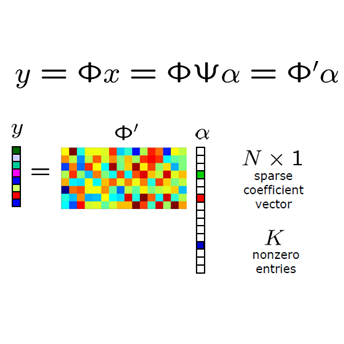In Bora et al. (2017), a mathematical framework was developed for compressed sensing guarantees in the setting where the measurement matrix is Gaussian and the signal structure is the range of a generative neural network (GNN). The problem of compressed sensing with GNNs has since been extensively analyzed when the measurement matrix and/or network weights follow a subgaussian distribution. We move beyond the subgaussian assumption, to measurement matrices that are derived by sampling uniformly at random rows of a unitary matrix (including subsampled Fourier measurements as a special case). Specifically, we prove the first known restricted isometry guarantee for generative compressed sensing with subsampled isometries, and provide recovery bounds with nearly order-optimal sample complexity, addressing an open problem of Scarlett et al. (2022, p. 10). Recovery efficacy is characterized by the coherence, a new parameter, which measures the interplay between the range of the network and the measurement matrix. Our approach relies on subspace counting arguments and ideas central to high-dimensional probability. Furthermore, we propose a regularization strategy for training GNNs to have favourable coherence with the measurement operator. We provide compelling numerical simulations that support this regularized training strategy: our strategy yields low coherence networks that require fewer measurements for signal recovery. This, together with our theoretical results, supports coherence as a natural quantity for characterizing generative compressed sensing with subsampled isometries.
翻译:在博拉等人(2017年),在测量矩阵为高森和信号结构是基因神经网络范围的地方,为压缩测量保证制定了一个数学框架。测量矩阵和(或)网络重量的分布在亚高西(2017年)之后,就对全球NN的压缩遥感问题进行了广泛分析。我们超越了二陆基假设,进入了通过对单一矩阵随机行进行统一取样得出的测量矩阵(包括小抽样Fourier测量作为特例)。具体地说,我们证明第一个已知的关于以子抽样的等离子型神经网络进行遗传压缩感测的限量性保证,并提供具有近于定序最佳样本复杂性的回收界限,解决了Scarlett等人(2022年,第10页)的公开问题。恢复效果的特点是一致性和新参数,用来测量网络与测量矩阵之间的相互作用。我们的方法依赖于以高度概率为核心的次空间计参数和想法。此外,我们提出了培训GNNO的正规性性质保证,以有利于与精准的基因测量战略的一致性。我们提出了定期进行模拟的精确测算。我们作为测算的精度的精度战略。



